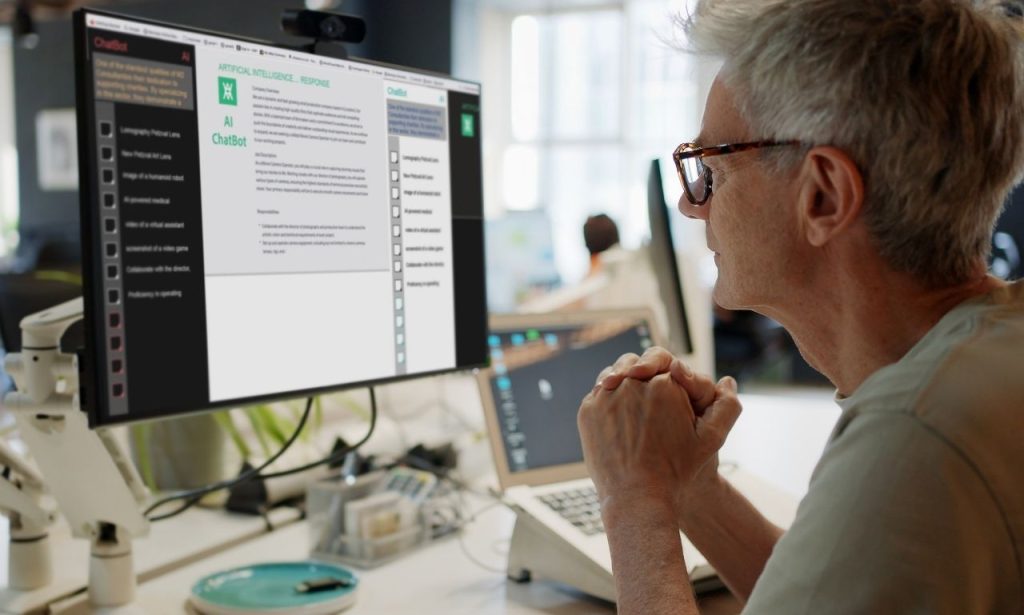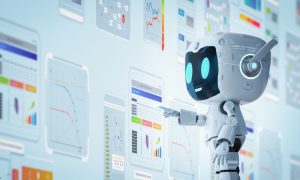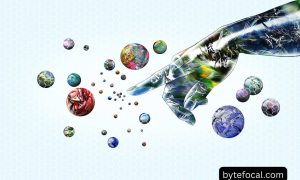AI teams face unique challenges. They must manage complex models, shifting goals, and ever-evolving technologies. But one constant remains: team collaboration. Knowing how to strengthen cooperation across AI teams is the difference between mediocre progress and breakthrough innovation. Strong communication keeps everyone on the same page. Intelligent workflows save valuable time. And the right tools drive projects forward. Let’s break down how to strengthen collaboration across AI teams.
Streamlining Team Communication

Nothing tanks an AI project faster than garbled communication. I’ve watched brilliant teams build completely wrong solutions because requirements got lost in translation. It’s painful to watch and even more painful to fix.
Communication in Hybrid and Asynchronous Work
Hybrid work threw a wrench into already complex AI team dynamics. Half your team is in the office, half working from their kitchen table. Some are night owls, others early birds. Without the right structure, communication is chaos.
Last year, I consulted for a computer vision team that was absolutely drowning in hybrid work confusion. Their remote members felt like second-class citizens. Information disappeared into private office conversations. Nobody knew who was doing what.
We implemented a “remote-first” communication protocol—even if you’re sitting beside someone, important conversations happen in shared digital channels. Everything got documented. Meeting recordings became mandatory. Questions needed specific response timeframes.
Crazy result? Productivity jumped 40% in two months. The team actually started shipping on schedule. Several remote members told me they finally felt like equal contributors.
For asynchronous teams, you need different rules of engagement. Create dedicated “slow” and “fast” communication channels. Set clear expectations about response times for each. Record everything worth knowing in a central, searchable knowledge base—not buried in Slack threads or email chains.
Time zones can actually work in your favor if you structure handoffs properly. I’ve seen teams use the “follow the sun” approach to coding, with Asia-Pacific engineers picking up where European colleagues left off. It requires immaculate documentation, but it’s like getting magical extra development hours.
Improving Written Communication
Look, most technical folks hate documenting their work. They’d rather code all day. However, written communication makes or breaks AI team collaboration.
Start by killing the blank page syndrome. Create templates for everything—status updates, technical specs, research findings, and meeting notes. The easier it is to document, the more likely people are to actually do it.
Invest in improving your team’s technical writing skills. Yeah, it seems fluffy, but it matters. One quick win? Ban jargon unless absolutely necessary. Make “would my grandmother understand this?” the test for clarity. You’d be shocked at how this simple standard improves cross-discipline communication.
Something that worked wonders for my clients was to create different documentation tiers. At Level 1, we explained the concepts to non-technical stakeholders. Level 2 covers implementation details for the broader technical team. Level 3 dives into the nitty-gritty for specialists. This approach prevents both confusion and information overload.
Enhancing Visual Communication
Words fail when explaining complex AI systems. I’ve sat through too many meetings where people argued for 30 minutes until someone finally drew a diagram that resolved everything in 30 seconds.
Standardize your visual language. Create shared symbols, color meanings, and diagram formats. It sounds trivial, but it prevents massive confusion. When a red arrow always means data flow and a blue box always means a model component, understanding happens faster.
Interactive visualizations are worth their weight in gold. I pushed a healthcare AI client to build dashboards showing their models in action. Suddenly, clinicians could grasp how the system made predictions. Regulatory folks understood potential bias issues more clearly. Engineers saw performance bottlenecks immediately.
Don’t reinvent visual wheels. Find tools that generate standard visualizations from your code, data schemas, or project management system. Consistency makes comprehension 10x easier across disciplines.
Structuring Workflows and Facilitating Preparation

Even brilliant communicators fail without structured workflows. AI projects are too complex for seat-of-the-pants coordination. You need systems that prevent chaos.
AI-driven Workflow Structuring
This might sound meta, but AI tools can dramatically improve AI team workflows. They spot patterns humans miss.
I implemented workflow analysis software for a natural language processing startup that was consistently missing deadlines. The system identified that data labeling was creating massive, hidden bottlenecks. The team had focused its optimization efforts on the wrong part of the pipeline! We restructured, and their next release shipped three weeks early.
Process mining tools compare your actual workflows (what people really do) against your intended processes (what you think they do). The gaps are eye-opening. One client discovered their supposedly “agile” team was following a bizarre, improvised waterfall process because their tools secretly encouraged it.
Automate every boring task. Every. Single. One. Merge commits, deployment checks, status updates, data validation—if it’s routine, it should be automated. I helped an ML team reclaim 12 engineer hours weekly just by automating their testing and documentation processes. That’s practically an extra team member for free.
Facilitating Meeting Preparation
AI teams waste obscene amounts of time in useless meetings. The culprit? Poor preparation.
Meeting prep should be mandatory, not optional. Send materials 24 hours beforehand. Define specific decisions needed. Make sure relevant data is accessible and properly formatted. That five-minute prep investment saves 30 minutes of meeting time.
Stop having meetings where people just report status. That’s what documentation is for. Reserve synchronous time for discussions, decisions, and genuine collaboration. One client cut their meeting load by 60% with this simple rule change.
Use AI tools to generate post-meeting summaries and action items. The best ones integrate with your project management system to automatically create tickets and assign tasks. No more action items disappearing into the void.
Enhancing Project Management
Traditional project management breaks with AI work. The uncertainty inherent in research and model development demands different approaches.
Create milestone-based roadmaps rather than time-based ones. Set clear criteria for advancing from research to development to deployment. Use confidence intervals instead of fixed deadlines where appropriate. This realistic approach prevents the timeline fantasy that plagues most AI projects.
AI-enhanced project management tools now predict completion dates based on team velocity and similar past work. They’re scary accurate. One computer vision client consistently underestimated the timeline by 40%. Their new prediction system’s worst estimate was off by just one week over a six-month project.
I’m a huge fan of automated dependency tracking for AI teams. These tools map relationships between workstreams and sound the alarm when one team’s delay will impact others. It prevents the “why didn’t you tell us you were behind?” disasters that blow up projects.
Creating a Synergy with Team Collaboration Tools
Tools won’t fix broken collaboration, but the right ones amplify good practices. Choose carefully—tool sprawl creates as many problems as it solves.
How AI Can Help Remote Team Collaboration
Remote AI teams face unique challenges. Spontaneous collaboration disappears, knowledge sharing requires deliberate effort, and cultural differences create subtle misunderstandings.
AI tools address these issues surprisingly effectively, going well beyond simple video meetings.
Enhanced Communication
Electronic communication tools serve purposes beyond connecting people. Computer-assisted translation software provides users with real-time technical term interpretation. The system creates immediate transcripts of meetings, which include speaker identification. The platform identifies possible misunderstanding areas in written messages before your final transmission.
Implementing smart notification systems benefits distributed teams significantly. These systems discover which team members respond best at different times to deliver urgent messages efficiently. The system distributes delayed non-critical updates to avoid continuous interruptions. It also recommends appropriate communication pathways that consider message type and criticality levels.
Specialized voice assistants help teams schedule efficiently and without problems. Top systems handle all aspects of meetings, from scheduling to agenda making through facilitation, note-taking, and follow-up tracking. Through these tools, the client’s team leaders cut down seven hours of administrative work each week.
Project Management
Project management platforms now incorporate AI planning capabilities and suggest task breakdowns based on similar past projects. They identify resources needed for specific workstreams. They flag unrealistic expectations before they derail your schedule.
Risk prediction has become remarkably sophisticated. Modern systems analyze your project structure, team composition, and historical patterns to highlight potential failure points. They suggest mitigation strategies based on what worked in similar situations. This foresight prevents the fire-fighting mode that kills productivity.
The task allocation features in newer platforms are eerily effective. They match work to team members based on skills, current workload, past performance with similar tasks, and even personal preferences.
Smart Scheduling
Calendar management across time zones is a special kind of torture. Smart scheduling assistants eliminate the pain. They find meeting slots that work for everyone, accounting for preferences, focus-time needs, and even typical working hours by location.
The best scheduling tools protect deep work by design. They cluster meetings to maximize uninterrupted concentration periods, prompt you to reconsider meeting requests that would fragment productive time blocks, and even suggest which meetings could be handled asynchronously instead.
I witnessed a scheduling transformation with a multinational research team spanning 11 time zones. Their custom AI scheduling system reduced coordination time by 85% while creating more humane schedules for everyone. Team members at the far edges of the time zone stopped getting 3 AM meetings.
Knowledge Sharing
Modern knowledge management platforms automatically organize, tag, and connect information. They extract key concepts from documents, conversations, and code repositories and build searchable knowledge graphs that make institutional memory useful rather than a digital junk drawer.
AI-powered semantic search has transformed information retrieval. These systems understand what you’re looking for, not just the keywords you use. They connect related concepts from multiple sources. They even generate custom answers by synthesizing information from disparate documents.
Relationship mapping shows who knows what across your organization. These tools identify subject matter experts based on their contributions and interactions. They suggest connections between people working on related problems. They highlight knowledge dependencies and transfer opportunities that would otherwise remain hidden.
Sentiment Analysis
The condition of team members directly affects the quality of their collaborative work. Team dysfunction indicators become visible through sentiment analysis tools during their analysis of communication patterns. These systems monitor team members’ communication by tracking their engagement patterns and changing interaction and tone.
The systems help detect problems of inclusion that affect distributed teams. These tools reveal instances where specific team members fail to participate in essential discussions, demonstrate the decreased interaction between remote workers and leadership, and identify cultural differences that can unintentionally generate conflicts.
All organizations must establish absolute privacy regulations when using monitoring systems. Monitoring should concentrate on overall patterns instead of watching individual workers. The organization should disclose the data collection procedures and the intended usage of this information. When properly applied, these tools enhance team relationships without developing surveillance issues.
Virtual Team Building

Remote teams require deliberate activities to build connections between their members. AI helps teams make better virtual connections by examining team member profiles to generate suitable team activities. The system detects shared attributes and differences among distributed workers that might remain hidden.
Virtual reality environments significantly improve shared connectivity between individuals. Spontaneous conversations combined with relationship-building occur in these virtual settings, but scheduled video calls often prohibit this kind of human interaction. The virtual reality spaces where several teams convene for weekly coffee breaks have proven remarkably successful.
Team challenges that use gamification methods allow members to establish bonds through joint success. The platform adopts AI technology to deliver personalized experiences by analyzing team objectives and member preferences. These systems handle competitive approaches and collaborative functions to create stronger bonds among team members. The most successful team challenges unite educational targets with relationship development activities.
Conclusion
Accidental collaboration does not exist, especially when teams use AI and span different disciplines, locations, and time zones. Cases need deliberate communication methods, work process optimization, and matching technology selection.
Through its implementation, this article has helped struggling teams improve their performance. Projects that appeared doomed to fail now catch up to their original schedules. The implementation of basic definition clarity enables teams to construct exceptional solutions as one united group. The results stem from structured teamwork enhancement rather than mystical methods.
You need to conduct a truthful assessment to understand your current situation. Where are the communication breakdowns? Which workflows create unnecessary friction? Your collaborative tools serve as either facilitators or obstacles to team efforts. Prioritize the highest-impact opportunities first.
Technology provides tools to help human collaboration, yet it does not generate the collaborative process itself. Every organization functions on common goals combined with mutual respect. Create your fundamental base before you add appropriate processes and tools. Your AI teams will achieve better performance through an enjoyable work experience.
Also Read: How AI Has Revolutionized Financial Forecasting
FAQs
In my experience, specialized jargon and conceptual frameworks create communication walls between disciplines.
I recommend one weekly all-hands synchronous meeting plus smaller functional team check-ins as needed.
Look for platforms integrating knowledge management, project tracking, and communication while minimizing context switching.
Track cycle time, defect rates, team sentiment scores, and velocity improve with better collaboration.




